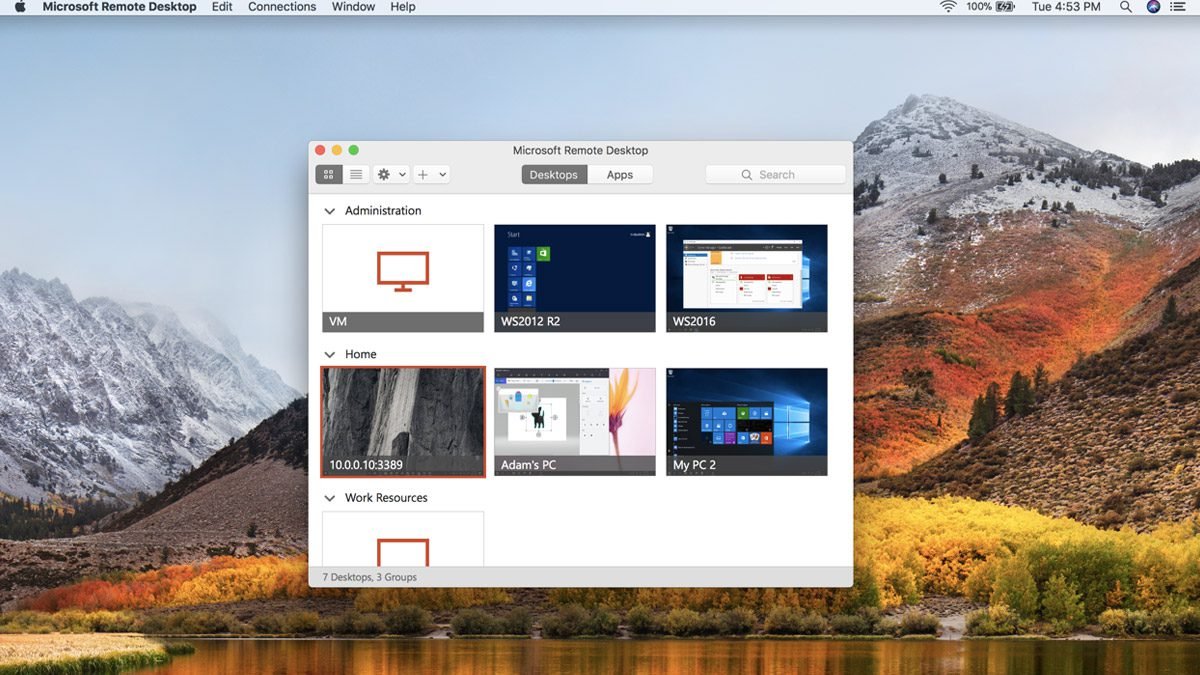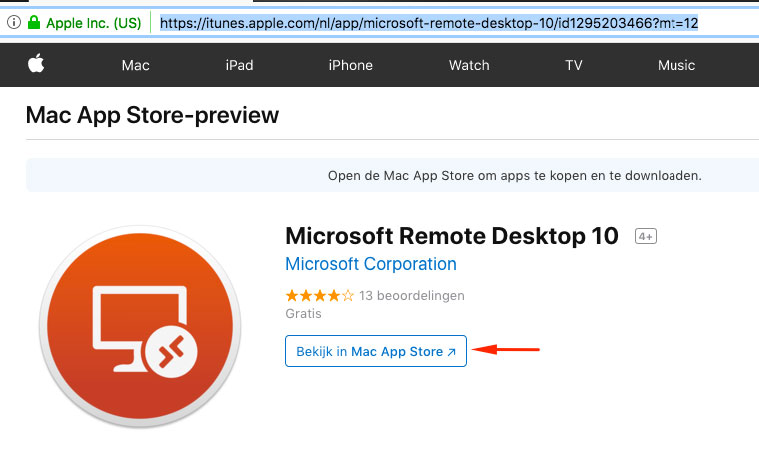Support and IT professionals can remotely access and view iOS device screens (iPhone and iPad screens) using Splashtop SOS. SOS is support software for IT, help desk and support professionals to provide quick, attended support on iOS, Android, Windows and Mac.
Select the remote PC name that you added, and then wait for the connection to complete. On your local Windows 10 PC: In the search box on the taskbar, type Remote Desktop Connection, and then select Remote. On your Windows, Android, or iOS device: Open the Remote Desktop app (available for free. To get started with Remote Desktop on your iOS device, follow the below steps, Go to iTunes, download the Remote Desktop client and install; You will be prompted to add a Remote Desktop or a Remote resource. Here, you need to make sure that you have configured your Windows 10 PC rightly for the Desktop linking to be successful. Remote Desktop from an iOS Device. For iOS, you know the drill, download the Microsoft Remote Desktop app from on your iPad or iPhone. Again, you’ll have a better experience with a 10” iPad. Jan 16, 2021 Airserver is one of the best and top-rated applications to control the iPhone from a PC remotely. In this method, we will use Airserver to control the iPhone from the PC. First of all, you need to download and install one cool app that is Airserver on your Windows PC, this is the app that will mirror iPhone screen on PC.
How to remotely view your customer’s iPhone or iPad Screen with SOS
Get Splashtop SOS

Sign up for SOS to remotely view an iOS device with your Windows or Mac computer. You can use the service with a free trial or low-cost paid subscription.
SOS is a great value and costs much less than other attended support tools. It is based on proven Splashtop remote access technology, used by more than 30 million users worldwide.
The iOS mobile device access features are not included in the free non-commercial version of SOS, the original version of SOS, or Splashtop Remote Support. You must purchase Splashtop SOS if you want to remote access iPhones and iPads.
Your customer downloads the SOS app from the App Store
Have your customer go to the SOS app download link (as displayed in your Splashtop app) from their iOS device. They will see a link to get the SOS app from the iOS App Store. When they run the SOS app on their iPad or iPhone it will display a session code that you will enter on your screen. Note that this app is only available for iOS 11 and later. This functionality isn’t available for earlier versions of iOS. (You can also custom brand the SOS app)
Your user will have to go through a few extra steps the first time to enable the Screen Recording option in the iOS Control Center. They will then use that to start the screen sharing session. The details of that process are described in the video and article link at the bottom of the page.
Enter the code in your Splashtop Business app and start viewing the iOS screen
Run the Splashtop Business app on your computer and click the SOS (plus sign) icon near the top of the app to open the SOS connect screen. Enter the nine-digit code displayed in the SOS app on your customer’s iOS device. When you click the arrow to start the session, the end user will be prompted to swipe up from the bottom of the screen (or swipe down from the top right corner of the screen on iPhone X) and start AirPlay screen sharing to complete the process. The SOS session will be listed at the top of their AirPlay list.

At this point you will be able to live view their iPhone or iPad screen in a window on your computer screen.
The image below shows a view of the end user’s iPhone screen, the technician’s interface, and viewing the iPhone screen in a window on the computer screen with the controls expanded.
Using the Viewing Controls
Click the arrow at the top of the mirrored device screen window to access the controls. The four buttons are:
- Disconnect
- Rotate Clockwise
- Scaled/Original size toggle
- Full Screen
You can also take print screens of the iOS screen using the standard print screen key combinations for your Windows or Mac computer.

Disconnecting the Session
When the session is complete, you can close the viewer window on your computer. To ensure that the session is disconnected on the customer side, ask them to tap the icon to re-open the SOS app on their iOS device and click the “Disconnect” button to disconnect from the session. This will also end the AirPlay session.
Learn more and get started with Splashtop SOS
What else can you do with Splashtop SOS?
Splashtop SOS is your attended support solution for Windows, Mac, iOS, Android, and Chrome OS. It is a great way for help desk, support, and IT professionals to remotely access iPhones, iPads, computers, and other mobile devices to assist customers and a great alternative to vnc servers. SOS is completely cross-device and works across multiple operating systems.
If you’re already using another help desk system, mobile device management system, or unattended support tool, SOS is an inexpensive add-on that enables you or your team to provide quick support to managed or unmanaged computers and mobile devices.
- Remotely access and view iOS devices (iPad and iPhone)
- Remotely access and control Android 8.0 and up phones and tablets
- Remotely access and control Windows and Mac computers with additional features including file transfer, chat, and viewing from mobile devices
- Remotely access and view Chromebook devices to provide support.
At this time you can remotely view iOS and Android devices from Windows and Mac computers. We plan to add mobile device viewing from mobile devices in the future.

Get started with Splashtop SOS!
Looking to access your remote computer from your iPhone or iPad?
Iphone Remote Desktop Windows 10
Check out Splashtop Business Access or Splashtop Remote Support! iOS users can easily access remote computers from their iPhones and iPads with the Splashtop Business iOS app.
-->Applies to: iOS 13.0 or later. Compatible with iPhone, iPad, and iPod touch.
Important
This content applies to Windows Virtual Desktop with Azure Resource Manager Windows Virtual Desktop objects. If you're using Windows Virtual Desktop (classic) without Azure Resource Manager objects, see this article.
You can access Windows Virtual Desktop resources from your iOS device with our downloadable client. This guide will tell you how to set up the iOS client.
Install the iOS client
To get started, download and install the client on your iOS device.
Subscribe to a feed
Iphone Remote Desktop Windows 10 Not Working
Subscribe to the feed provided by your admin to get the list of managed resources you can access on your iOS device.
To subscribe to a feed:
Iphone Remote Desktop Windows 10 Home
- In the Connection Center, tap +, and then tap Add Workspace.
- Enter the feed URL into the Feed URL field. The feed URL can be either a URL or an email address.
- If you use a URL, use the one your admin gave you. Normally, the URL is https://rdweb.wvd.microsoft.com/api/arm/feeddiscovery.
- To use email, enter your email address. This tells the client to search for a URL associated with your email address if your admin configured the server that way.
- To connect through the US Gov portal, use https://rdweb.wvd.azure.us/api/arm/feeddiscovery.
- Tap Next.
- Provide your credentials when prompted.
- For User name, give the user name with permission to access resources.
- For Password, give the password associated with the user name.
- You may also be prompted to provide additional factors if your admin configured authentication that way.
- Tap Save.
After this, the Connection Center should display the remote resources.
Once subscribed to a feed, the feed's content will update automatically on a regular basis. Resources may be added, changed, or removed based on changes made by your administrator.
Next steps
Remote Desktop Windows 7

To learn more about how to use the iOS client, check out the Get started with the iOS client documentation.
